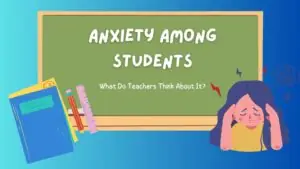Many people are starting to worry about the end of the break for student loan payments. Joshua Simmons, a student loan borrower, is one of them. He’s worried because his loan payment will now be as big as his house payment – a big $800. He’s now looking for help to deal with this problem. This issue is a big deal for many people who have to start paying their student loans again.

✅ AI Essay Writer ✅ AI Detector ✅ Plagchecker ✅ Paraphraser
✅ Summarizer ✅ Citation Generator

Key Takeaways:
- The end of the student loan payment pause is causing distress among borrowers facing high monthly payments.
- As a strategy, some borrowers opt for minimal loan repayments, banking on potential future loan forgiveness.
- Concerns rise over possible tax implications if the neglected student loans are forgiven.
- The crisis emphasizes the bigger problem of soaring higher education costs in the U.S. demanding comprehensive solutions.
Frustrations over Economic Conditions
As the temporary halt on student fee loans draws to a close, a number of individuals find themselves anxious, given the simultaneous escalation of living expenses and a lack of wage growth. For many, the upcoming loan repayments are just one of many growing financial burdens, with surging costs for everyday essentials such as groceries, taxes, and rent adding to the strain.
Preferred Strategy: Paying the Bare Minimum
The overwhelming sentiment among these individuals is a shared sense of resignation, with many vowing to make only the smallest repayments possible on their student loans. Coupled with a certain degree of skepticism regarding government intervention, these individuals are looking to the future with a mix of uncertainty and hopeful anticipation of possible loan forgiveness measures.
Potential Unforeseen Consequences
Despite this approach, fears persist about the possible unintended consequences of accumulating student loan debt. Some caution against neglecting these debts, warning that any forgiven loans might be considered taxable income, resulting in potentially significant tax liabilities.
Navigating Income-Driven Repayment Plans
Within this climate of uncertainty, borrowers are also seeking clarity on how income-driven repayment (IDR) plans might be affected by their income status during the pandemic. Information from Studentaid.gov offers some comfort, indicating that recertification deadlines have been extended, and borrowers won’t be required to recertify before payments restart.
From Budget Adjustments to Fears of Sudden Shock
Meanwhile, the prospect of the resumption of loan payments is causing significant anxiety for many, especially given rising rental costs. Others are already bracing for impact, preparing their budgets for the end of the loan repayment pause, while expressing concern that this sudden shift could take many by surprise.
The Larger Issue: The Cost of Higher Education
Amidst these immediate worries, the broader issue of the rising cost of higher education in the United States is also being spotlighted. Many believe that the societal benefits of higher education should not be overshadowed by the individual financial burdens it imposes. As these concerns continue to mount, it’s clear that the collective challenge of student loan debt requires a comprehensive and effective solution.
FAQ
What is the general sentiment among individuals as the student loan repayment pause ends?
As the student loan repayment pause ends, many individuals are expressing concern and anxiety. They are worried about balancing their already tight budgets with the new burden of student loan payments. Some individuals are opting to pay the minimum amount they can afford, keeping hope for potential loan forgiveness in the future.
What are the potential consequences of allowing student loans to grow without paying them down?
While it may be tempting to pay the minimum or ignore the loans altogether, it’s important to understand the potential risks associated with this approach. If the loan grows too large over time, when it reaches the write-off year, it is counted as income and could result in a substantial tax bill from the IRS.
What should individuals know about the recertification deadlines for Income-Driven Repayment (IDR) plans?
Those on an IDR plan won’t be required to recertify before payments restart, and the earliest recertification could be required is six months after the payment pause ends. If the recertification date falls between now and six months after the pause ends, it will be pushed out by one year. For the most up-to-date information about the IDR, individuals are encouraged to contact their loan servicer.
Related stories:
The Post-Pandemic Puzzle: High School Diplomas Rise Amid Declining Test Scores and Attendance
Reconsidering Test Scores: New Research Supports a Holistic Approach to High School Assessment
Exploring the Impact on American Education: Terminating of Affirmative Action
Follow us on Reddit for more insights and updates.





Comments (0)
Welcome to A*Help comments!
We’re all about debate and discussion at A*Help.
We value the diverse opinions of users, so you may find points of view that you don’t agree with. And that’s cool. However, there are certain things we’re not OK with: attempts to manipulate our data in any way, for example, or the posting of discriminative, offensive, hateful, or disparaging material.